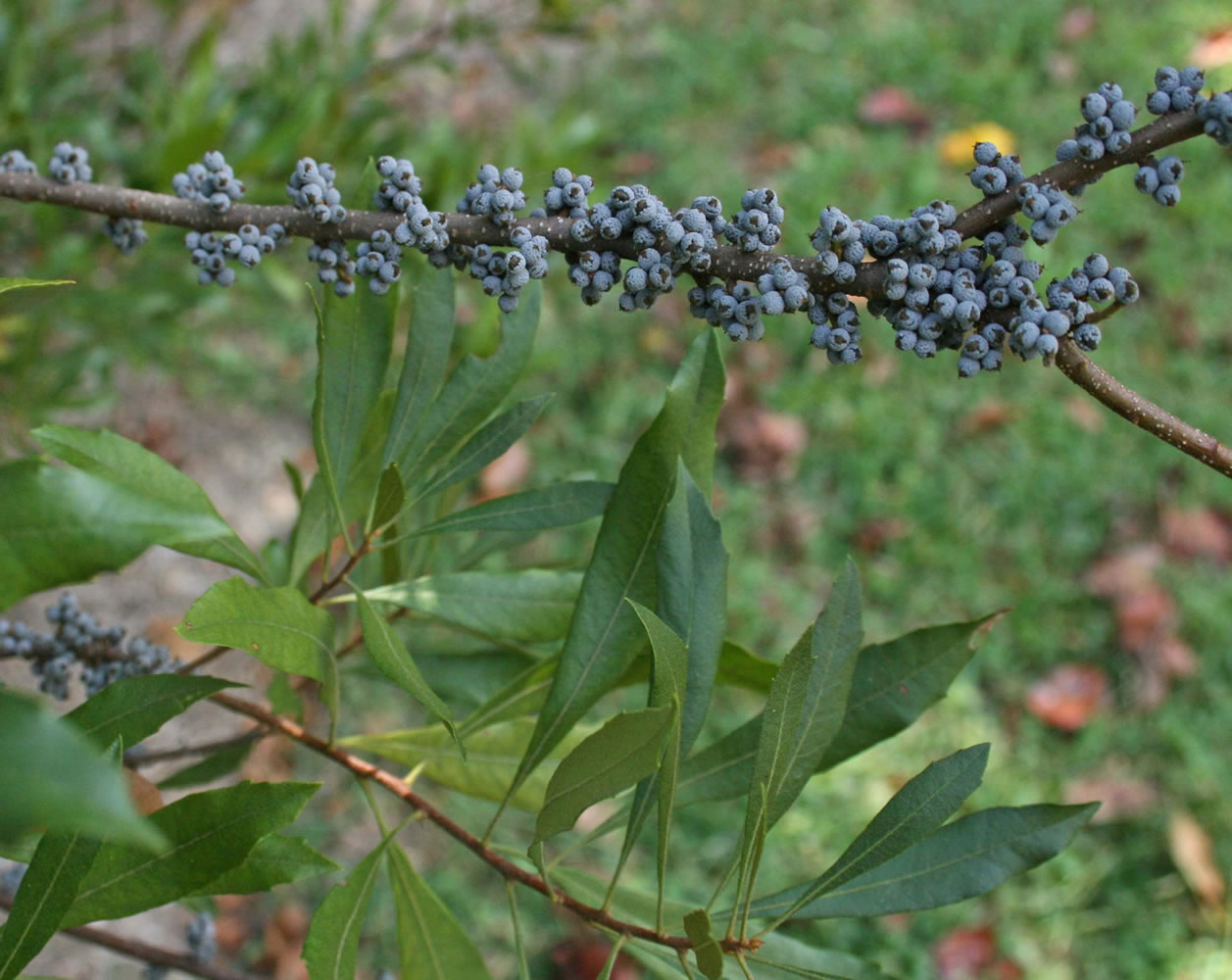One of winter’s native evergreens — wax myrtle — is a stunning shrub in the garden any season of the year.
Wax myrtle, botanically called Morella cerifera (formerly Myrica cerifera), is a fuss-free large shrub or small tree with a good personality. It’s always green, aromatic and attractive along shorelines and wetlands. In home gardens, it works as a privacy hedge along a property line, providing songbirds with predator protection, nesting sites and food sources.
Plus, it smells good when you walk near it or crush its leaves.
“This native evergreen has soft, olive-green foliage with a spicy odor that repels insects and deer usually avoid leaves with strong fragrances,” says Helen Hamilton, past president of the John Clayton Chapter, Virginia Native Plant Society, and retired biology teacher living in Williamsburg, Va. She co-wrote “Wildflowers and Grasses of Virginia’s Coastal Plain” (http://wildflowersofvirginia.com).
Leaves are lance-shaped and soft, a nice contrast with other leathery, spiky and spiny winter shrubs, she adds. Wax myrtle grows quickly and can form good screening and hedges. It will quickly become a small tree, but growth can be controlled with pruning to encourage dense foliage and a rounded shape.
The plant likes any kind of habitat — sun or shade — but it prefers good drainage and slightly acidic soils. Wax myrtle grows wild in Southeastern states in pine woods, swamps, and bog, and in the Coastal Plain and Piedmont of Virginia, according to Hamilton.
Wax myrtle’s good personality stretches even further, tolerating drought, sand, sun and salt spray. It’s perfect planted near brackish water and on beaches. Garden centers sell the native species, as well as smaller cultivars.
In April tiny flowers appear on both male and female trees, before new leaves, but the female trees produce fruits in late summer and early fall. In winter, the seeds are important foods for Carolina wrens and tree sparrows.
Early settlers boiled the berries, allowed the liquid to cool and collected the floating wax to make into bayberry candles, adds Hamilton.
Like legumes, wax myrtle roots carry nodules of bacteria that change atmospheric nitrogen to mineral form. The plant grows in poor soil, but in several years the soil turns fertile, she continues.
Myrtle (yellow-rumped) warblers are aptly named because they frequent the shrubs, according to Hamilton.
“They are winter residents in our area, able to survive on the fruits of juniper, poison ivy, and these bayberries,” she says.
“This has given them a large long-term advantage over most of our other warblers and many other birds that make increasingly perilous journeys to winter in the tropics, where there is massive habitat destruction.”
Myrtle warbler
Yellow-rumped warblers, nicknamed myrtle warblers, are active little birds in Southeastern yards during winter, according to Hamilton.
“As they chirp from shrubs and trees, the yellow patch flashing on their backside makes them easy to spot,” she says.
Females are duller and browner, but both sexes can be recognized by their flashes of black, white and yellow. Bill Williams, author of “The Birds of Virginia’s Colonial Historic Triangle” calls them “butter-butts,” she continues.
“Often they perch on the outer limbs of trees, flying out after insects, twisting and turning, and often catching their prey on the wing. This is when the yellow rump patch is most visible. In winter the birds enjoy sunflower seeds and suet at home bird feeders, and feed on fruits of juniper, poison ivy and wax myrtles.”
They are a migrant and winter resident along the East Coast from early October to mid-April, according to Brian Taber, president of the Coastal Virginia Wildlife Observatory (www.cvwo.org). There are two subspecies — the “myrtle warbler” in Southeastern states and the “Audubon warbler” in Western mountains. The myrtle warbler breeds in Canada and northeastern United States, migrating to Southeastern states, Central America and the Caribbean for winter.



